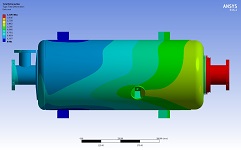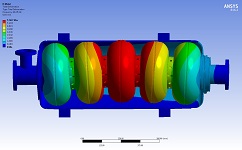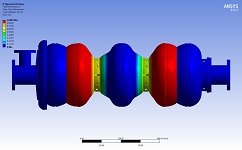| Proton Linac Development Division |
 |
|
Engineering design of 650 MHz 5 Cell Superconducting Radio Frequency (SCRF) Cavities
Under Indian Institutions and Fermilab Collaboration (IIFC), RRCAT is involved in the design and development of 650 MHz 5 Cell Superconducting Radio Frequency (SCRF) cavities for Proton Improvement Plan –II (PIP-II) project. PIP-II will be a 800 MeV superconducting proton linac to provide high power proton beams for future accelerator-based neutrino experiments in USA. The 650 MHz 5 cell elliptical SCRF cavities (Beta 0.61 and 0.92) are the major building blocks for PIP-II linac. These cavities are made of high grade (RRR~300) niobium material surrounded by a titanium vessel which consist liquid helium at 2K temperature. The experience and expertise developed during design and development of these cavities will be useful for future high intensity proton linac projects in RRCAT.
We are involved in the engineering design process of 650 MHz 5 Cell elliptical SCRF cavities. The scope of engineering design includes:
- Design of dressed SCRF cavity components (titanium helium vessel, niobium cavity, titanium bellows etc.) based on ASME Boiler and Pressure Vessel (BPV) Code guidelines.
- Finite element analysis of dressed cavities for structural stability for possible load cases.
- Minimize Lorentz Force Detuning (LFD) for dressed cavities.
- Minimize sensitivity to micro-phonics due to helium pressure fluctuations (df/dP) and mechanical vibrations.
- To keep the stiffness and tuning sensitivity at suitable level to allow for tuning.

CAD model for dressed SCRF cavity
|

Stress pattern for SCRF cavity
|

Displacement pattern for SCRF cavity
|

Modal analysis for SCRF cavity
|

Buckling analysis for SCRF cavity
|

Transport loading analysis for SCRF cavity
|
|
|
|






















